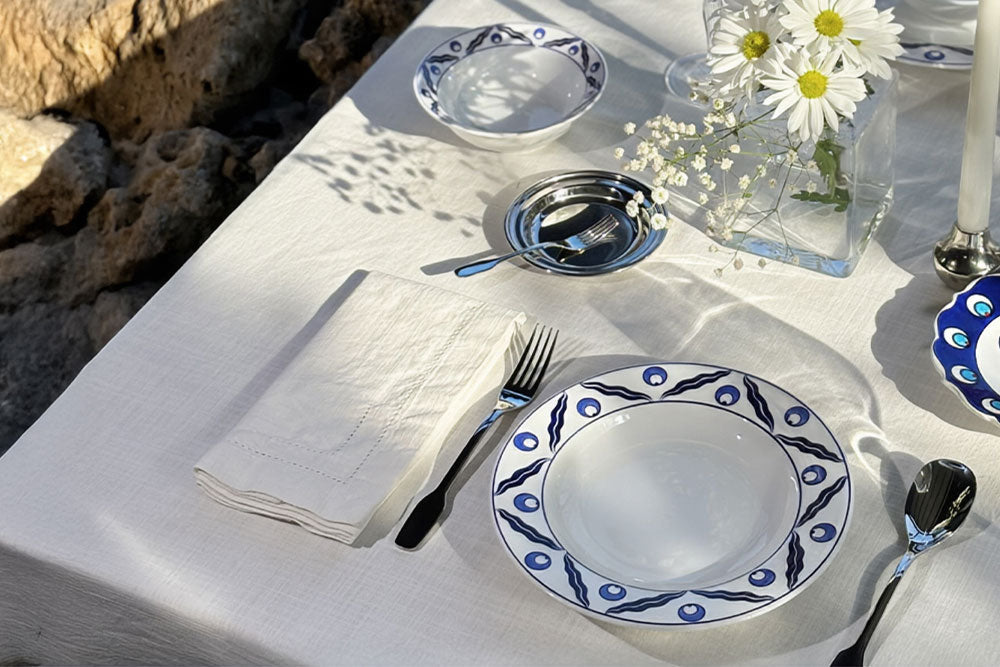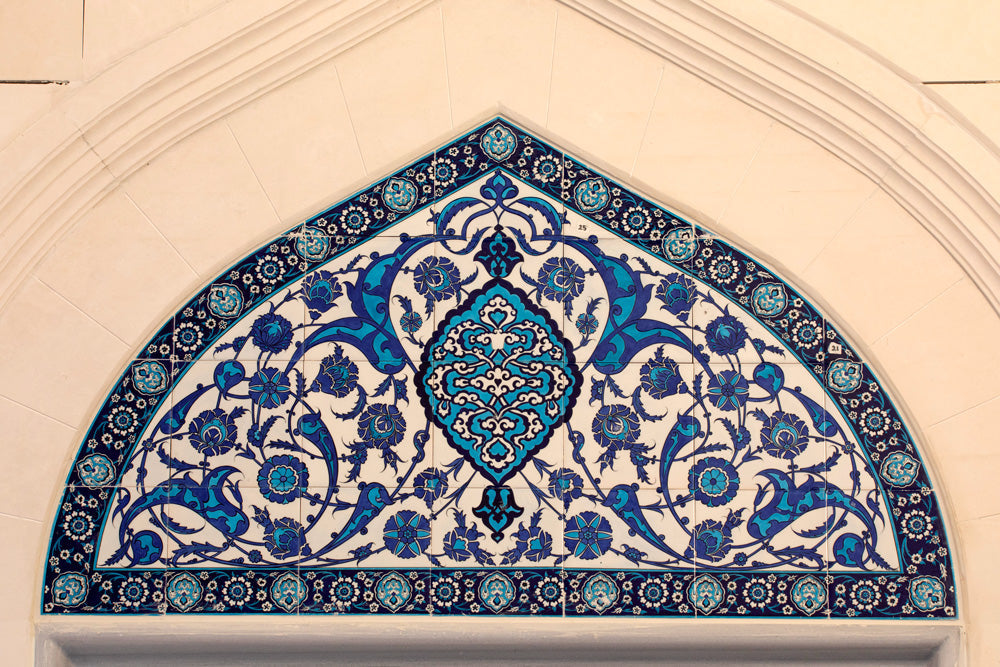Welcome to Iznik tile world
Welcome to Iznik tile world
History of Turkish Tiles
May 08, 2022 3 min read

Turkish Tiles
The history of Turkish tile art dates back to the Karakhanids from the first Muslim Turkish states. This shows that the art of tiles has a history of more than a thousand years. The Great Seljuks and Anatolian Seljuks used tiles frequently in architectural decorations, and after the collapse of the Anatolian Seljuk State, a new era began in the art of tiles with the establishment of the Ottoman State. It started in the Iznik district of Bursa. It was started to be built in Kütahya when its construction decreased there.
Iznik Tile

The first Ottoman period Iznik tiles can be seen in Bursa Yeşil Mosque and tomb (1421), Bursa Muradiye Mosque (1426), Edirne Muradiye Mosque (1433) and Tiled Kiosk (1472). These are usually tiles produced with mosaic or glazed paint techniques. In this period, dark blue, blue, turquoise and black colors were dominant and mostly geometric patterns were used. In this period, the wall tiles used in architecture were called kashi, and the ornaments and kitchenware tiles were called evâni.
In the 16th century, there were great developments in both quality and pattern production in the tiles produced in Iznik, and Turkish tile art lived its heyday. The Ottomans abandoned techniques such as mosaics and developed the technique of under-glaze paint and glaze. In addition, new motifs began to be developed and produced in the palace muralist. With the use of red, green, blue, dark blue, turquoise and brown, a new era has begun in Iznik tiles.
Kütahya Tile

While the first examples of tiles began to be seen in Kütahya at the end of the 14th century, the real progress in tile started after the second half of the 16th century, when Iznik was at the peak of the art of tiles. Especially in order to meet the tile needs of Istanbul, tile workshops were established in Kütahya, and with the decline of the Ottoman Empire, tile making in Iznik began to decline at the same pace. With the disappearance of the art of tile making in Iznik in the 18th century, Kütahya became the only place operating in this field. The most beautiful and last examples of tile making in the Ottoman Empire came from the hands of Hafız Mehmed Emin Efendi.
Collapse of the Iznik tiles
From the end of the 16th century, tensions began to arise between the craftsmen of Iznik and the imperial palace. Tile makers spent more and more energy fulfilling orders from wealthy private individuals, often from Europe. Ottoman authorities responded by issuing edicts forbidding potters from accepting other work before completing orders for the empire. But manufacturers were reluctant to abide by this decision. At a time when inflation was wreaking havoc due to the empire's economic woes, Ottoman officials refused to adjust tile prices accordingly. Such disputes with the court - combined with natural disasters and spreading diseases - caused the quality of Iznik production to decline in the early 17th century. Innovation in design was just as strong, but technical standards fell sharply. Imperfections and imperfections began to appear in the glaze work, and the colors mixed together. At the end of the 17th century, production in Iznik came to an end. In the 18th century, the ceramic industry almost disappeared and Kütahya became its leading center.
Also in News

Rediscovering Timeless Beauty: Handcrafted Iznik Ceramic Dinnerware for the Modern Table
April 08, 2025 2 min read

Thank you for being here!
Join us to discover the latest in Iznik tiles, enjoy special offers, and celebrate the beauty of Turkish artistry together.



